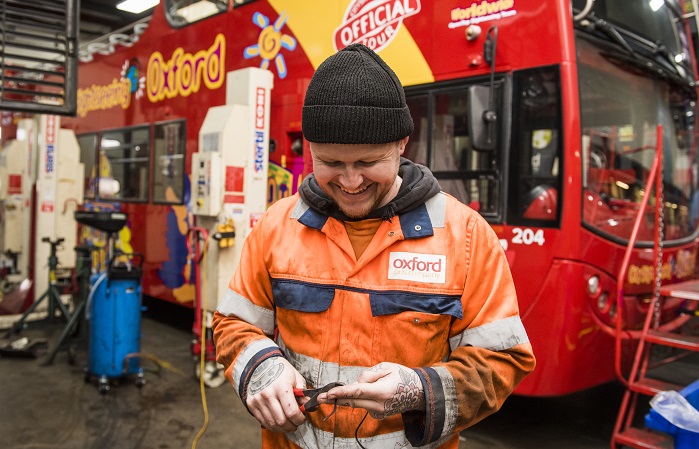
For transport organisation Oxford Bus Company, creating an effective and appealing benefits package is key to staying fighting fit in the war for talent, which is particularly fierce in this industry. However, where implementing expensive benefits could mean raising fares and driving away customers, it is important to balance cost with value.
Luke Marion, finance and commercial director at Oxford Bus Company, says: “Recruitment and retention is absolutely key, but [we] can’t break the bank to do it. It’s what [we] can do that will help [us] achieve [our] aims and do things more efficiently, without spending too much money, [but still] go above and beyond what [competitors] are doing.”
Among its 900-strong workforce, 700 of Oxford Bus Company’s employees are drivers, with the rest split between office-based staff, tour guides, mechanics and cleaners. At their core, benefits must, therefore, be focused on attracting and retaining drivers, while also catering for the needs of those in other roles.
Previously, Oxford Bus Company had a discount platform in place for staff, as well as a bikes-for-work scheme and employee assistance programme (EAP), but saw only about 20% take-up, representing relatively little value for money. In 2015, it therefore made the move to the Hapi app, provided by Personal Group.
This mobile-based platform pulls together all elements of the employee experience at Oxford Bus Company, from hosting payslips and rotas through to providing benefits, including among others an EAP, recognition scheme, bikes-for-work provisions, technology salary sacrifice scheme, and pension top-ups.
For many employers, paying to bring in an external provider or consultant might seem indulgent for those with a tight budget; however, more employers should consider taking this route, particularly comparing the spend on benefits sourced independently, versus the value-add elements of working with a third party, says Marion. For example, many services are provided at no extra cost, while those that the business does pay an additional stipend for, such as the EAP, are priced at a more cost-effective rate than if sourced independently.
“The actual package itself is quite light on the cost,” he adds. “[The EAP] costs [virtually] nothing in the scheme of things compared to providing the services ourselves. The shopping discounts cost the [business] nothing, and that’s one of the ones that employees use the most.”
The shift to a consolidated platform that placed all benefits at employees’ fingertips, in the same location as pay and rotas, and with the opportunity to communicate with staff via the app, has itself paid dividends in terms of engagement. Of 900 employees, 827 have signed up to the platform, while 778 have subscribed to email communications. On average, the platform sees more than 100 log-ins each day, representing a vast improvement on the engagement levels seen previously.
“We took the view that we wanted to create something like an intranet, easy to log into for people who might not be that digitally literate, [where] the previous system was quite difficult to get into,” says Marion. “We took the view that Hapi needs to be one place for everything.”
The decision to move to a holistic platform has also helped Oxford Bus Company position its benefits package in a more attractive light.
“We needed [the platform] to have some life to it, be a valid communications tool and something that people saw as useful,” says Marion. “They might log in for the first time because of payslips or rotas, but then see that the shopping discounts are really good. Over time, we’ve seen that change the perceptions of the package. They are actually aware of [EAPs] and they’re used by a lot more people now.”
Partnering with a provider has also meant the organisation can be sure the money being spent each year is going to result in an up-to-date, flexible and adaptable package. “It’s not just a product you buy off the shelf, put it in and that’s it; it’s a living thing,” Marion explains.